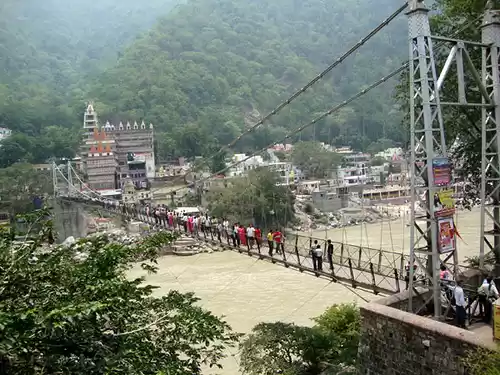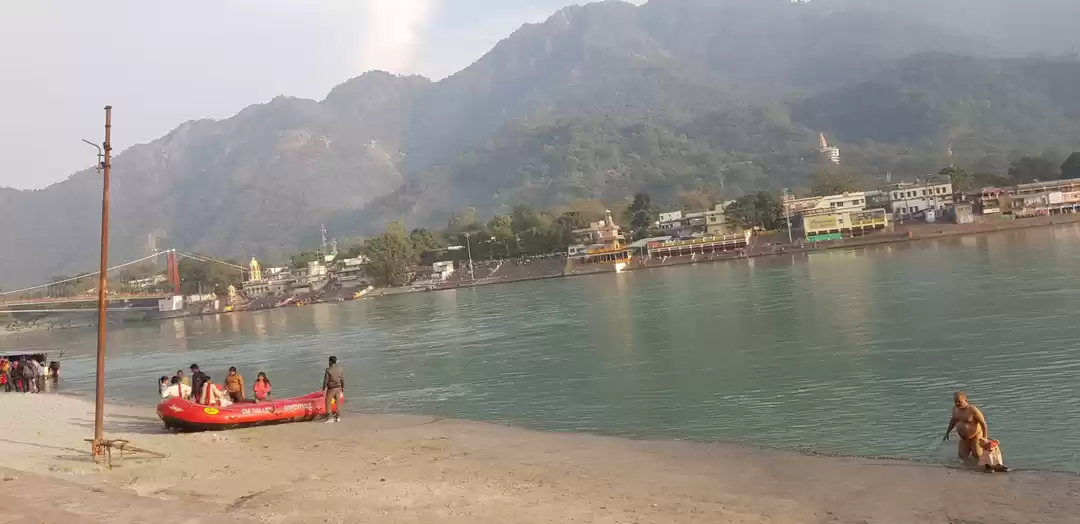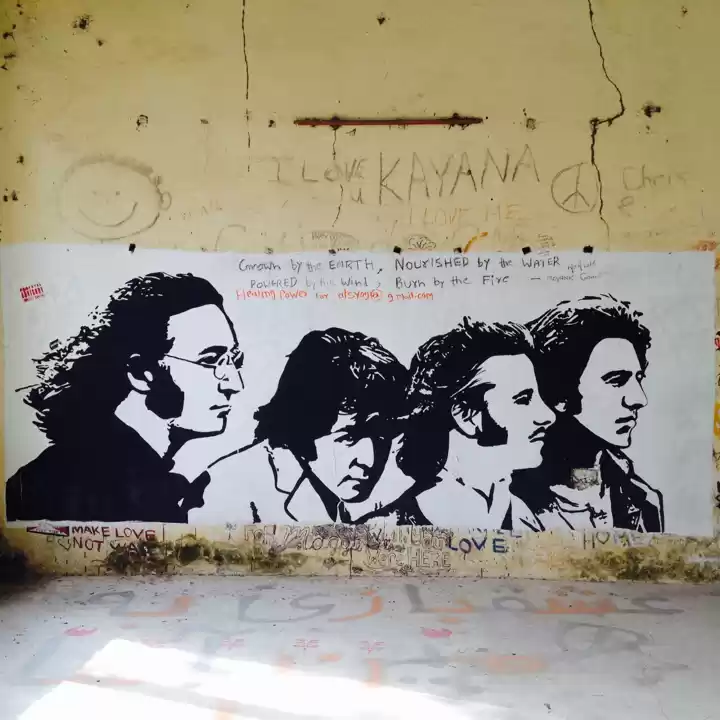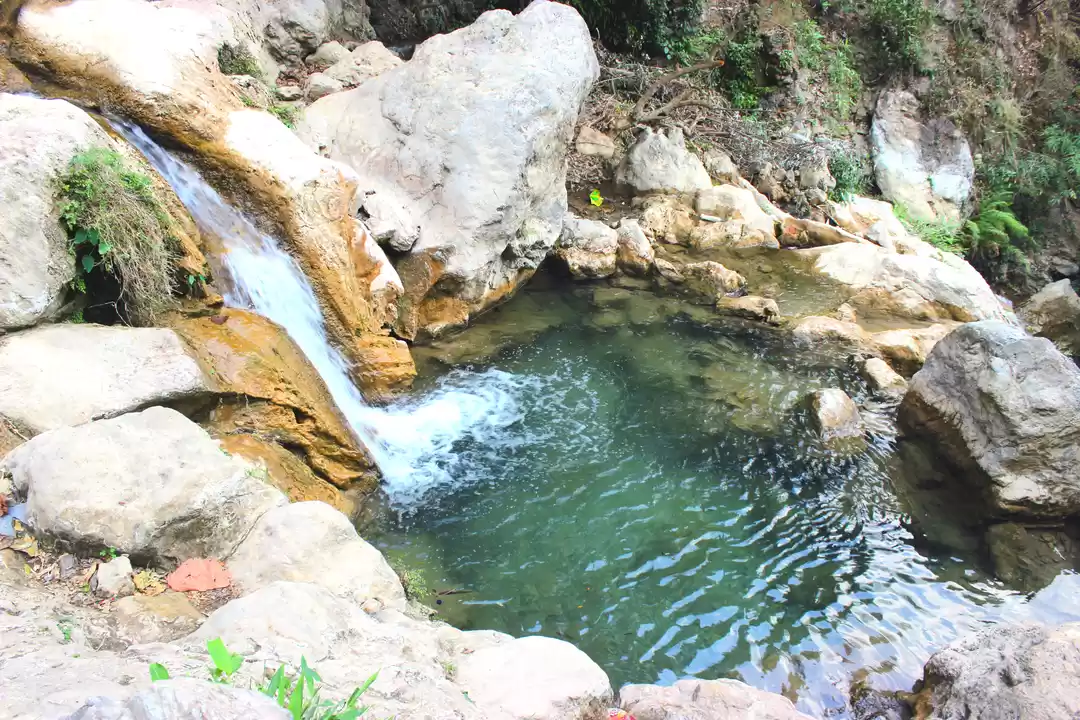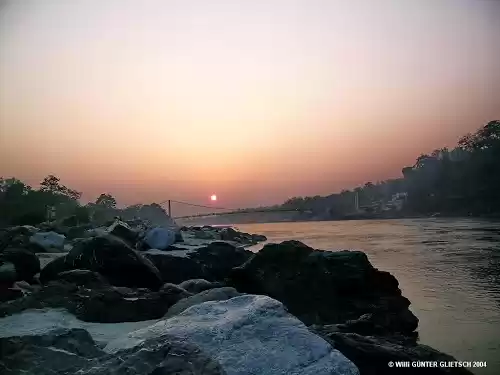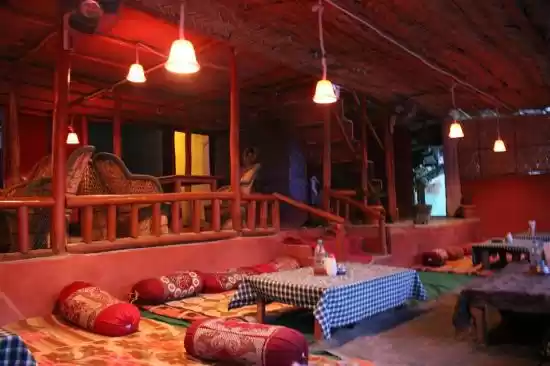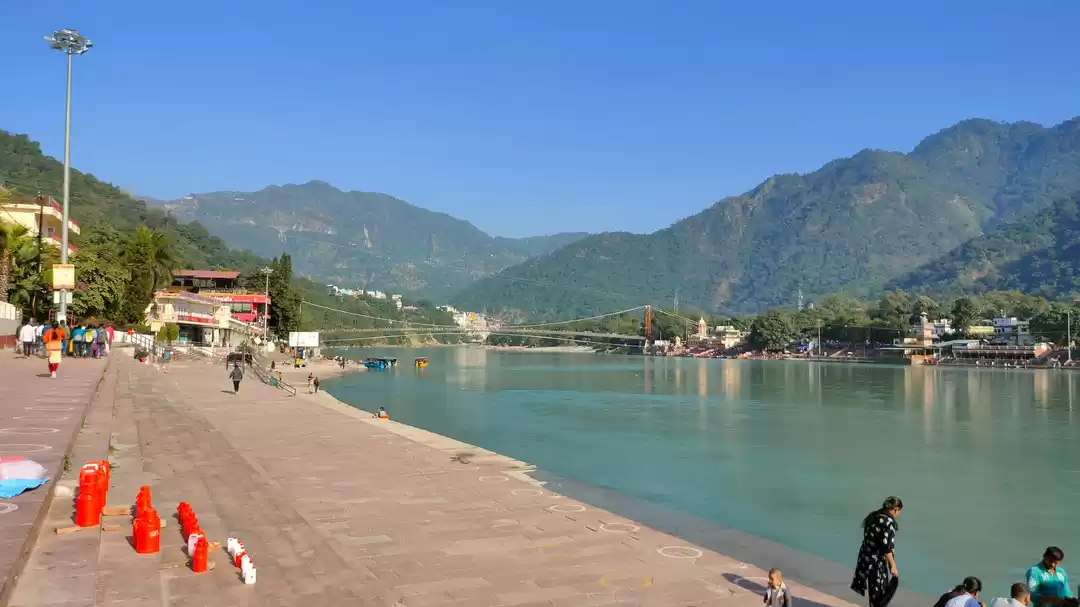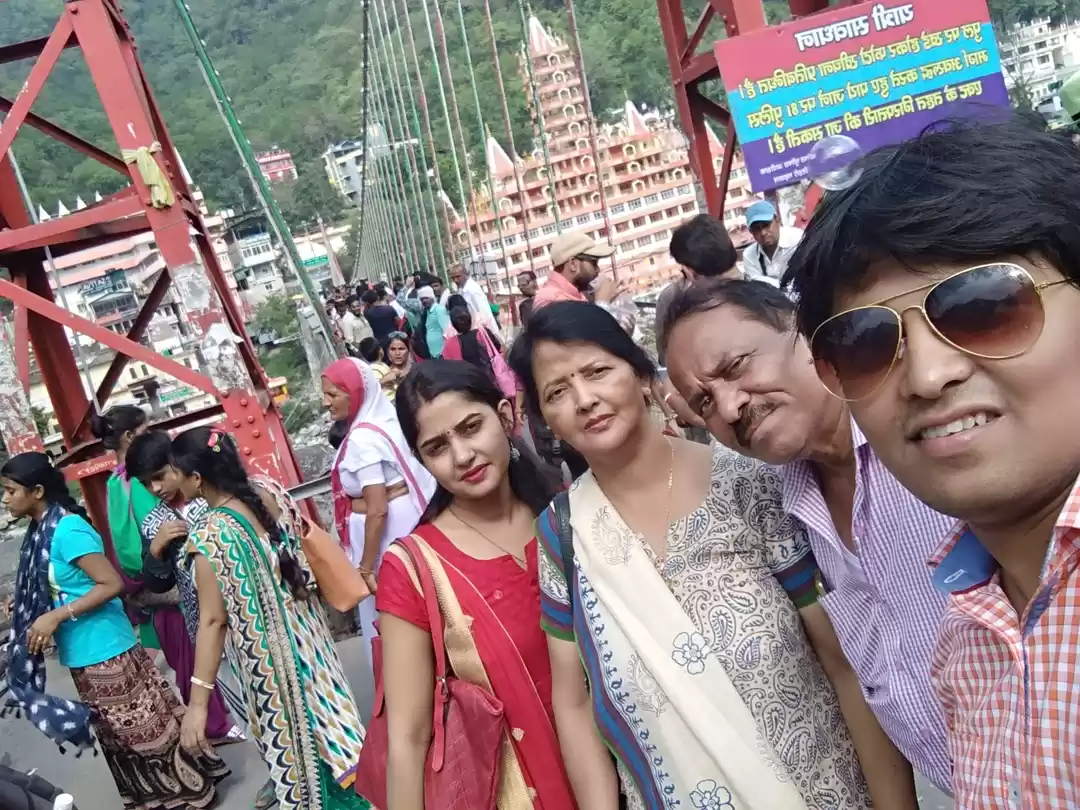Have you ever wondered what it feels like to walk on a bridge that sways with the wind and offers a panoramic view of the holy Ganga river and the majestic Himalayas? If yes, then you should definitely visit Ram Jhula, one of the most popular tourist attractions in Rishikesh, Uttarakhand. Ram Jhula is a 450-feet long iron suspension bridge that connects the two banks of the Ganga river and offers a thrilling experience to the visitors.
In this article, we will tell you everything you need to know about Ram Jhula, including its history, significance, how to reach, best time to visit, popular attractions around, things to do in Rishikesh, hotels to stay near, and FAQs.

How to Reach Ram Jhula
Ram Jhula is located in the heart of Rishikesh, about 3 km from the main bus stand and 6 km from the railway station. You can easily reach Ram Jhula by various modes of transport, such as:
By Road: Rishikesh is well-connected by road to major cities like Delhi, Dehradun, Haridwar, and Chandigarh. You can take a bus or a taxi to reach Rishikesh and then hire an auto-rickshaw or a cycle-rickshaw to reach Ram Jhula. Alternatively, you can also walk along the river bank or take a boat ride to cross the river and reach Ram Jhula.
By Rail: The nearest railway station to Ram Jhula is Rishikesh Railway Station, which is about 6 km away. You can take a train from Delhi, Haridwar, or Dehradun to reach Rishikesh and then hire an auto-rickshaw or a cycle-rickshaw to reach Ram Jhula.
By Air: The nearest airport to Ram Jhula is Jolly Grant Airport in Dehradun, which is about 25 km away. You can take a flight from Delhi, Mumbai, or other major cities to reach Dehradun and then hire a taxi or a bus to reach Rishikesh and then Ram Jhula.
Best Time to Visit Ram Jhula
Rishikesh has a pleasant climate throughout the year, but the best time to visit Ram Jhula depends on your preference and purpose of visit. Here are some factors to consider while planning your trip:
Weather: Rishikesh experiences three seasons: summer (March-June), monsoon (July-September), and winter (October-February). The summer season is hot and dry, with temperatures ranging from 20°C to 35°C. The monsoon season is humid and rainy, with frequent showers and landslides. The winter season is cold and pleasant, with temperatures ranging from 5°C to 20°C.
Activities: Rishikesh is famous for its adventure sports, such as rafting, bungee jumping, camping, trekking, etc. The best time to enjoy these activities is from September to June, when the weather is favorable and the water level is optimal. However, some activities may be closed during the peak monsoon season (July-August) due to safety reasons.
Events: Rishikesh hosts many religious and cultural events throughout the year, such as Ganga Aarti, Yoga Festival, Rafting Festival, etc. The most popular event is the Ganga Aarti, which is a daily ritual of offering prayers and lamps to the Ganga river at sunset. You can witness this spectacular ceremony at Parmarth Niketan Ashram near Ram Jhula every evening. Another famous event is the International Yoga Festival, which is held in March every year at Parmarth Niketan Ashram. This event attracts thousands of yoga enthusiasts from all over the world who come to learn and practice various forms of yoga.
Based on these factors, we suggest that the best time to visit Ram Jhula is from October to March, when the weather is pleasant, the activities are open, and the events are happening. However, you can also visit Ram Jhula in other months, depending on your availability and interest.
Popular Attractions around Ram Jhula
Ram Jhula is not just a bridge, but a gateway to many other attractions in Rishikesh. Here are some of the popular attractions around Ram Jhula that you should not miss:
Ashrams: Rishikesh is known as the yoga capital of the world, and there are many ashrams near Ram Jhula that offer yoga and meditation courses, workshops, and retreats. Some of the famous ashrams are Parmarth Niketan, Sivananda Ashram, Swarg Ashram, Geeta Bhawan, etc. These ashrams also have beautiful gardens, libraries, museums, and temples that you can explore.
Temples: Rishikesh is a holy city for Hindus, and there are many temples near Ram Jhula that are dedicated to various gods and goddesses. Some of the famous temples are Shri Ram Mandir, Shri Trimbakeshwar Mandir, Shri Neelkanth Mahadev Mandir, Shri Bharat Mandir, etc. These temples are known for their architecture, history, and spirituality.
Markets: Rishikesh is also a shopper’s paradise, and there are many markets near Ram Jhula that sell a variety of items, such as clothes, handicrafts, jewelry, books, souvenirs, etc. Some of the famous markets are Ram Jhula Market, Laxman Jhula Market, Swarg Ashram Market, etc. These markets are ideal for bargaining and finding some unique and affordable products.
The timings, entry fees, and dress codes for these attractions vary depending on their location and management. You can check their websites or ask the locals for more information.
Things to Do in Rishikesh
Rishikesh is not just a place to see, but a place to do. There are many things to do in Rishikesh that will make your trip memorable and exciting. Here are some of the things to do in Rishikesh:
Adventure Sports: Rishikesh is a hub for adventure sports, such as rafting, bungee jumping, camping, trekking, etc. You can enjoy these activities at various locations along the Ganga river or in the nearby hills. You can choose from different levels of difficulty and duration depending on your skill and stamina. You can also book these activities online or through local operators near Ram Jhula.
Religious Ceremonies: Rishikesh is a sacred city for Hindus, and there are many religious ceremonies that take place near Ram Jhula every day. The most famous ceremony is the Ganga Aarti, which is a daily ritual of offering prayers and lamps to the Ganga river at sunset. You can witness this spectacular ceremony at Parmarth Niketan Ashram near Ram Jhula every evening. Another famous ceremony is the Rudrabhishekam, which is a special worship of Lord Shiva with milk and water at Shri Trimbakeshwar Mandir near Ram Jhula every morning.
Sightseeing Places: Rishikesh is a scenic city that offers many sightseeing places that will mesmerize you with their beauty and charm. Some of the sightseeing places are Laxman Jhula (another suspension bridge similar to Ram Jhula), Neer Garh Waterfall (a natural waterfall near Laxman Jhula), Beatles Ashram (an abandoned ashram where the Beatles stayed and composed songs in 1968), Kunjapuri Temple (a hilltop temple that offers a stunning view of the sunrise and sunset), etc.
The safety precautions, equipment requirements, and booking options for these activities vary depending on their type and location. You can check their websites or ask the locals for more information.
Hotels to Stay near Ram Jhula
Rishikesh has a wide range of hotels to stay near Ram Jhula that suit different budget ranges and amenities. Here are some of the hotels to stay near Ram Jhula that we recommend:
Divine Resort & Spa: This is a luxury resort that offers spacious rooms with balconies overlooking the Ganga river. It also has a spa, a swimming pool, a restaurant, and a yoga hall. The price per night starts from Rs. 4000.
Hotel Yog Vashishth: This is a budget hotel that offers cozy rooms with basic facilities. It also has a yoga hall, a library, a cafe, and a garden. The price per night starts from Rs. 1000.
Zostel Rishikesh: This is a backpacker hostel that offers dorms and private rooms with shared bathrooms. It also has a common area, a kitchenette, a rooftop terrace, and a games room.The price per night starts from Rs. 300.
These are some of the hotels to stay near Ram Jhula that you can choose from. You can also check other options online or through local agents near Ram Jhula.

FAQs about Ram Jhula
Ram Jhula is a fascinating attraction that may raise some questions in your mind. Here are some frequently asked questions about Ram Jhula, along with their answers:
- How long is Ram Jhula?
Ram Jhula is 450 feet long, which is equivalent to 137 meters or 150 yards.
- When was Ram Jhula built?
Ram Jhula was built in 1986, which is 51 years after its twin bridge Laxman Jhula was built in 1935.
- Who built Ram Jhula?
Ram Jhula was built by the Public Works Department (PWD) of Uttarakhand, with the help of some local organizations and devotees.
- Why is Ram Jhula famous?
Ram Jhula is famous for its scenic beauty, its religious significance, and its adventurous experience. It offers a stunning view of the Ganga river and the Himalayan mountains. It also connects some of the holy places in Rishikesh, such as Parmarth Niketan, Swarg Ashram, Geeta Bhawan, etc. It also provides a thrilling experience to the visitors who walk or ride on the bridge that sways with the wind.
- Is Ram Jhula open at night?
Yes, Ram Jhula is open at night, and you can visit it anytime. However, it may be less crowded and less illuminated at night, so you may want to be careful and cautious while crossing the bridge.
- Can vehicles cross Ram Jhula?
No, vehicles are not allowed to cross Ram Jhula. Only pedestrians and two-wheelers can cross the bridge. However, you may have to pay a nominal fee of Rs. 10 for crossing the bridge on a two-wheeler.
- How far is Ram Jhula from Laxman Jhula?
Ram Jhula is about 2 km away from Laxman Jhula, which is another suspension bridge similar to Ram Jhula. You can walk or take an auto-rickshaw or a cycle-rickshaw to reach Laxman Jhula from Ram Jhula.
- What is the difference between Ram Jhula and Laxman Jhula?
Ram Jhula and Laxman Jhula are both suspension bridges that connect the two banks of the Ganga river in Rishikesh. However, there are some differences between them, such as:
Ram Jhula is longer than Laxman Jhula. Ram Jhula is 450 feet long, while Laxman Jhula is 450 feet long.
Ram Jhula is newer than Laxman Jhula. Ram Jhula was built in 1986, while Laxman Jhula was built in 1935.
Ram Jhula has more ashrams and temples around it than Laxman Jhula. Ram Jhula has Parmarth Niketan, Swarg Ashram, Geeta Bhawan, etc., while Laxman Jhula has Tera Manzil Temple, Lakshman Temple, etc.
Ram Jhula is named after Lord Rama, while Laxman Jhula is named after his brother Lord Laxman. According to Hindu mythology, Lord Rama and Lord Laxman crossed the Ganga river at these places during their exile.
- Can I take photos on Ram Jhula?
Yes, you can take photos on Ram Jhula, as there is no restriction or prohibition for photography. However, you may want to be respectful and mindful of the people and the surroundings while taking photos. You may also want to avoid taking photos during peak hours or crowded times, as it may cause inconvenience or disturbance to others.
- Is there any entry fee for Ram Jhula?
No, there is no entry fee for Ram Jhula. You can visit the bridge for free anytime. However, you may have to pay a nominal fee of Rs. 10 for crossing the bridge on a two-wheeler.
Conclusion
Ram Jhula is a must-visit attraction in Rishikesh that will give you an unforgettable experience of beauty, spirituality, and adventure. It is not just a bridge, but a symbol of culture, history, and faith. It is not just a place to see, but a place to do. It is not just a destination, but a journey.
So what are you waiting for? Plan your trip to Rishikesh and visit Ram Jhula today. You will surely fall in love with this amazing attraction and its surroundings. And don’t forget to share your experience with us at Tripoto.com! We would love to hear from you and see your photos and videos of Ram Jhula. Happy traveling!


























